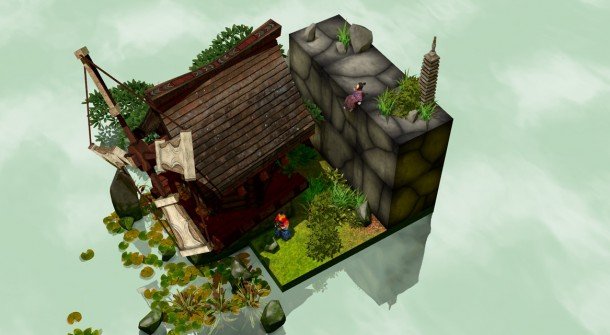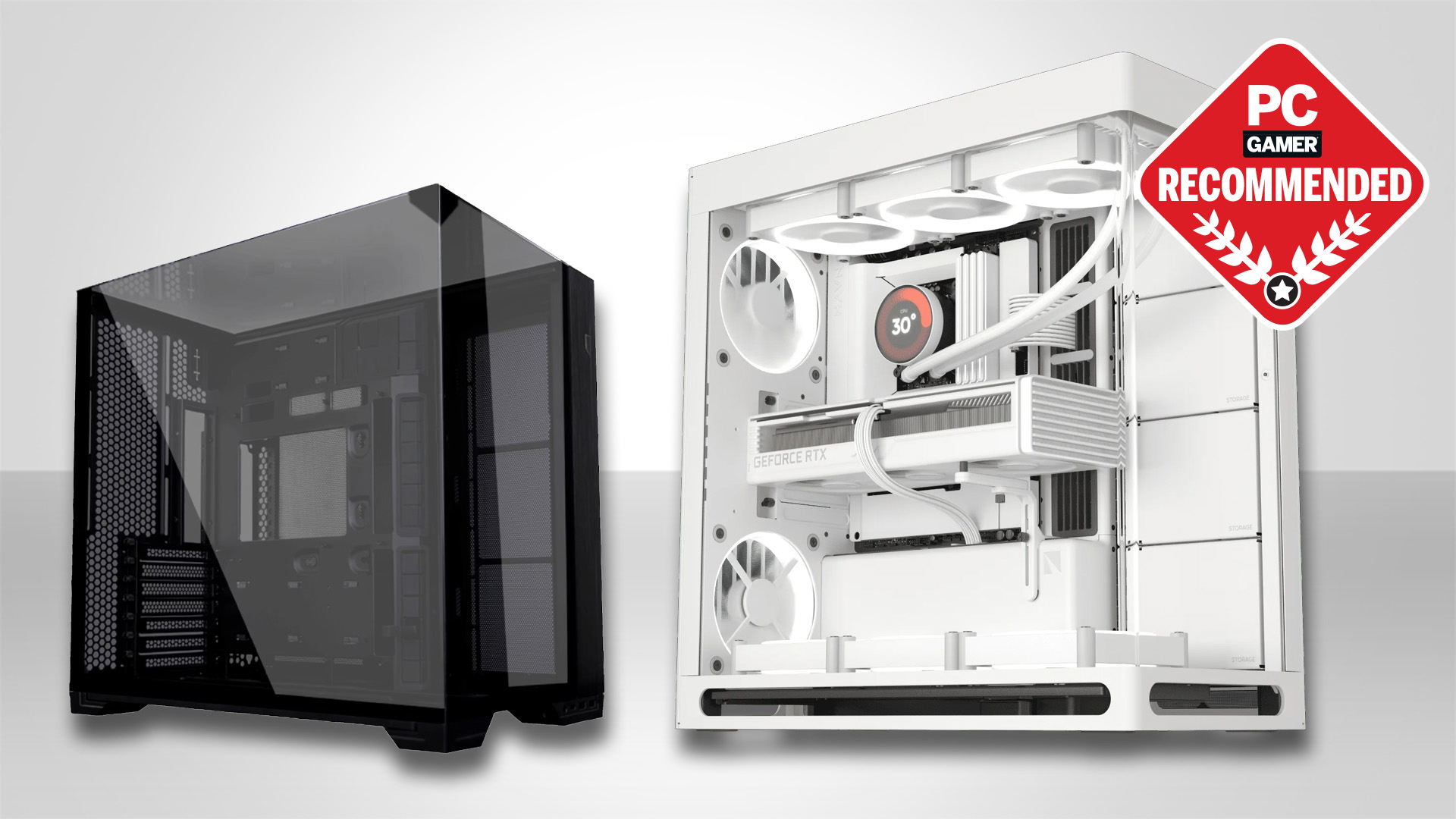Miegakure preview — playing a four-dimensional puzzle game

For the first six or so levels, I did not get Miegakure at all. I was completing the early puzzles, but I had no idea how I was doing it. It was like finishing a trigonometry problem and coming up the the correct answer without knowing why. I couldn't show my work. I felt dumb. I hoped the massive crowd at the PAX Prime Indie Megabooth wasn't watching my screen. They probably were. And totally judging me.
I'll try to explain how Miegakure works, but first, I'd recommend watching the creator explain it:
Alright, so, we're in three-dimensional space. Length, width, height. But in Miegakure, there's a fourth dimension, and it's not time, as I heard several people ask at the booth. It's a spatial dimension. When you look at the fourth dimension, the 3D plane you're standing on is divided into slices, each another world. Step onto a different slice and turn back to 3D space, and you're in another world.
As seen in the video above, if a wall exists in one world but not another, you can pass through it—at least, that's what a three-dimensional viewer would see. You really just walked around it by going in a direction they don't know exists.
At first, I didn't understand that activating my fourth-dimensional sense was showing me slices to step onto—I read that as one of the other worlds itself, which made things very confusing. Maybe I was distracted by the brilliant fourth-dimension visual transition. I want to see the code that makes everything stretch and collide like it does, because it's a work of art alone.

When I did finally get it, I realized how fantastic Miegakure could be. I got Fez immediately—a 2D being investigating 3D space—but I've never played with a 3D character investigating 4D space. Weird stuff happens in the fourth dimension, and it goes well beyond walking through walls.
Say, for instance, you need to get up to a high ledge, but don't have to block to push up to it. You can walk tetragonally over to a world with a block, then push it into the dimension you need it in. It took me a while to understand something very important: whatever section of the 3D plane you're standing on when you activate the 4D 'map' is the same section of the other worlds' planes you'll see. So if I want to push a block between dimensions, I have to look toward the fourth dimension while standing on the slice where the block exists.
Keep up to date with the most important stories and the best deals, as picked by the PC Gamer team.
The next introduction threw me for a bigger loop. I tried to push a block, and it stopped moving even though nothing was blocking it. It turned out it wasn't a square cube at all, but a 4D rectangular box—the other half of it was in another world. Ahh!
I played Miegakure for nearly an hour, and it kept surprising me with all the weird and fantastic stuff that can be done with the fourth dimension. I accidentally killed someone—well, maybe not 'killed,' but his speech bubble expressed a lot of unhappiness—by rudely invading his 3D space with my 4D block pushing. I felt bad, but it was pretty funny. There is a sweet, simple sense of humor in Miegakure, with characters and a story you witness passively. I imagine a fourth-dimensional being would view the lives of three-dimensional beings that way—he literally has perspective they don't.
Miegakure has been in development for a while, and it's coming out "when its done"—possibly before the end of next year. After I was done playing, there were still a ton of stages ahead, with what I expect will be a variety of weird solutions I couldn't possibly think of yet. If you liked Fez or Portal—or any puzzle game, really—look forward to it.

Tyler grew up in Silicon Valley during the '80s and '90s, playing games like Zork and Arkanoid on early PCs. He was later captivated by Myst, SimCity, Civilization, Command & Conquer, all the shooters they call "boomer shooters" now, and PS1 classic Bushido Blade (that's right: he had Bleem!). Tyler joined PC Gamer in 2011, and today he's focused on the site's news coverage. His hobbies include amateur boxing and adding to his 1,200-plus hours in Rocket League.

